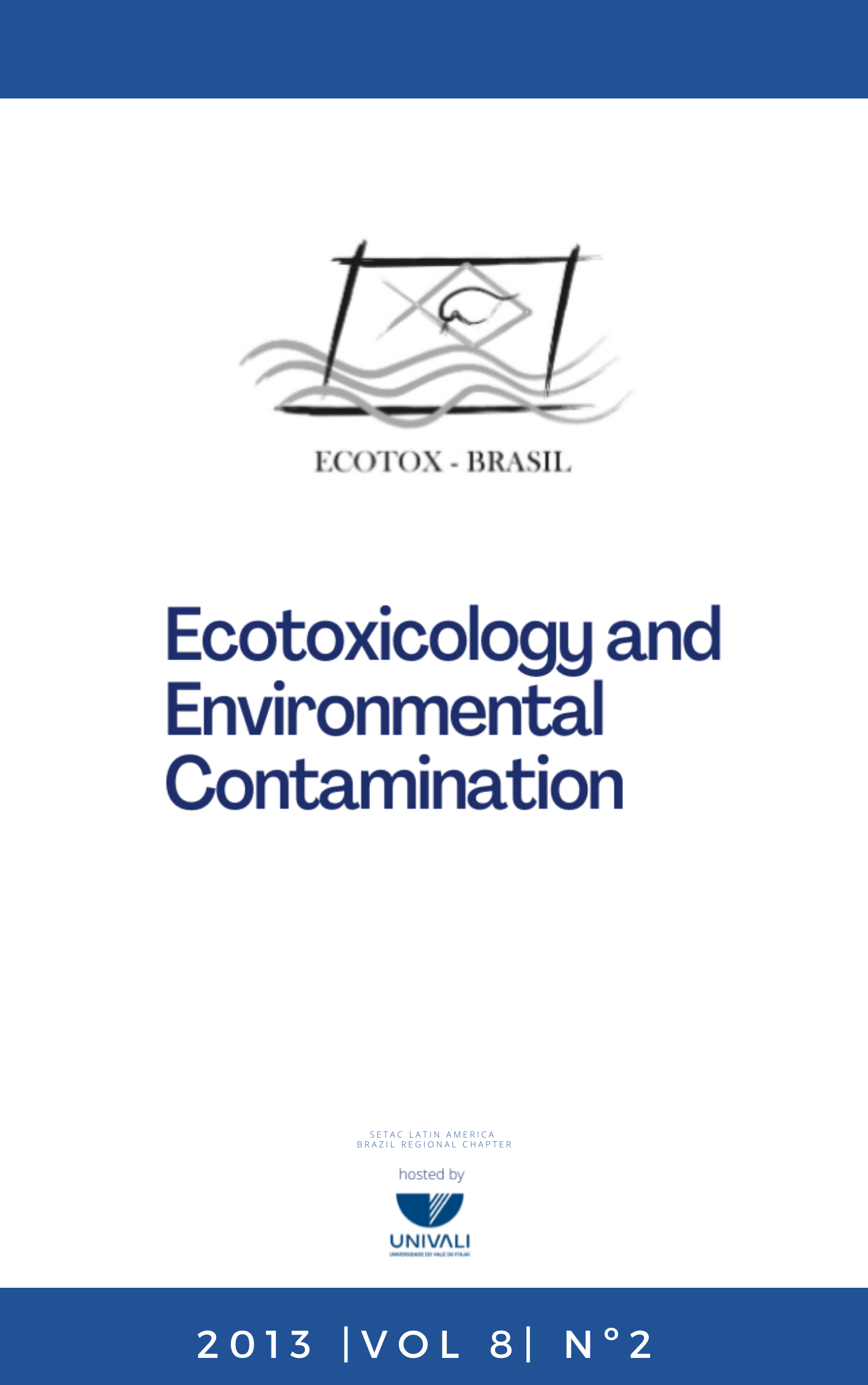Acute toxicity of pyrethroid-based insecticides in the Neotropical freshwater fish Brycon amazonicus
DOI:
https://doi.org/10.5132/eec.2013.02.009Abstract
Pyrethroids are insecticides widely used in agriculture to control ectoparasites and biological vectors. They can reach the water bodies by leaching and or runoff. Fishes are highly sensitive to pyrethroids and the nervous system sensibility and the deficient drug metabolism are the clues but the toxicity mechanisms are yet unclear. The acute toxicity assays allow evaluating the potential, environmental risks of specific pesticides. Type II pyrethroids are becoming widely used and there is no law concerning the limits of use to this kind of pesticide in Brazil. The LC50;96h was evaluated for three pyrethroid based-insecticides (PBI): cypermethrin, deltamethrin and λ-cyhalothrin in fish Brycon amazonicus. The LC50;96h for the cypermethrin based-insecticide (CBI) was 36 μg L-1; for deltamethrin based-insecticide (DBI) was 2.6 μg L-1; and for λ-cyhalothrin (LBI) was 6.5 μg L-1. During the tests some behavioral alterations were registered just after the exposure; they were more evident at the highest xenobiotics concentrations. These alterations were indicative of asphyxia and nervous system damages. The three insecticides are highly toxics to B. amazonicus and the degree of toxicity is: deltamethrin> λ-cyhalothrin> cypermethrin. The behavioral alterations observed are worrying since long-term exposure to sublethal concentrations can affect survival and reproductive ratios.
Downloads
Published
How to Cite
Issue
Section
License
Copyright © 2006 ECOTOX-Brasil
Copyright notice: It is a condition for publication that manuscripts submitted to this journal have not yet been published and will not be simultaneously submitted or published elsewhere. By submitting a manuscript, the authors agree that copyright for their article is transferred to the Sociedade Brasileira de Ecotoxicologia (ECOTOX-Brasil) if and when the article is accepted for publication. The copyright covers the exclusive rights to reproduce and distribute articles, including reprints, photographic reproductions or any other reproduction of a similar nature, including translations. No part of this publication may be reproduced, stored in a retrieval system or transmitted in any form or by any means, electronic, mechanical, photocopying, recording or otherwise, without permission of the publisher.
Notice: While every effort is made by the EEC, editors and editorial board to see that no inaccurate or misleading data, opinions or statements appear in this journal, they wish to make it clear that the contents of the articles and advertisements published herein are the sole responsibility of the contributors or advertisers concerned. Accordingly, the EEC, the editorial board and editors and their respective employees, officers and agents accept no responsibility or liability whatsoever for the consequences of any inaccurate or misleading data, opinion or statement.




